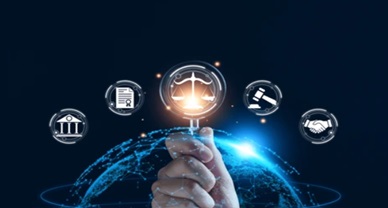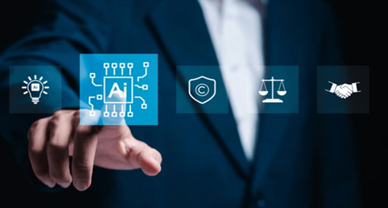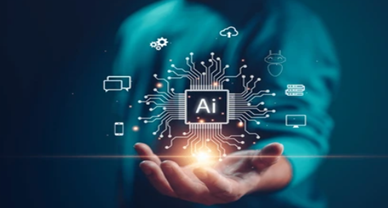Navigating Intellectual Property Rights in Artificial Intelligence: Challenges and Opportunities
In recent years, due to the development of technology, artificial intelligence (AI) has become a major innovation in various fields. Artificial intelligence in this century is extending its enhancement across industries, from healthcare to entertainment. Still, with these innovations, the sociotechnical task of managing IPR arises. This blog seeks to examine the relationship between AI and IPR and identify critical areas of discussion, conflict, and appropriate strategy within the expanding rubric.
Learning About Data in the AI Context:
These AI systems, especially those based on artificial neural networks, prefer working with data. These systems develop patterns and forecasts through a combination of information, graphics, voice, and text. For instance, an ML model trained for the identification of dog breeds needs a set with images of different breeds labeled appropriately. However, the information used for the purpose of training AI models belongs to third parties and, therefore, can be copyrighted or protected by patents.
An integral part of training a neural network is the replication of data, and this can be in electronic form. This reproduction can happen at a number of times, with data collection, processing, and storage. In case the data is protected by copyrights, such actions may violate the copyright owner’s exclusive rights. That is, when utilizing images on websites, there may be a conflict of rights regarding the reproduction of those pictures.
Key Challenges in AI and IPR:
- Ambiguity in Legal Definitions: The various steps carried out in the training processes of AI do not conform to legal categories of reproduction, use or making. Thus, it is difficult, in this regard, to ascertain whether such processes violate other known forms of IPR.
- Indirect Infringement Risks: Although the AI itself may not recreate protected works, outputs may well be significantly similar to copyrighted material. For instance, if an AI produces art or designs most similar to other copyrighted art or designs, Equivalence by an AI leads to infringement.
- Limited Exceptions for AI Development: Of the available exceptions and limitations in places such as the European Union, it is notably difficult, especially for commercialization. However, where exceptions to text and data mining exist, they are generally constrained to the non-commercial or where the rights holders have given permission.
- Trade Secret Violations: Experiences for training AI are mostly confidential. Therefore, processed data contains sensitive information. Said use can also lead to the violation of trade secrets and thus contribute to the legal risk conformity issue.

Addressing the Challenges:
- To mitigate the risks associated with IPR in AI, stakeholders can adopt several strategies:
- Data Licensing Agreements: It is futile to train models using datasets that do not possess the right license and accreditation from the owners. It will also prevent future misunderstandings that may lead to problems relating to the unauthorized use of the services provided.
- Transparent AI Design: Developers should aim for transparency when designing AI systems. By showing how data is transformed and expunging any possibility of the output to contain materials that are similar to other copyrighted contents, they can lower the probability of getting nabbed for infringement.
- Leveraging Exceptions and Limitations: In case exceptions for text and data mining are provided, stakeholders can use them to learn their AI models. However, they should maintain the greatest compliance with the requirements established in regional legislation.
The Future of IPR in AI:
Over time, AI technology evolves, and so does the legal requirement for ways to regulate intellectual property. AI raises legal and policy issues which require that a onus be put on policymakers, legal scholars and technologists. Potential developments could include:
- Expanded Copyright Exceptions: Allowing practically training AI to search for broader exceptions or use more content for commercial purposes could keep the UK on the cutting edge of the Internet while ensuring that rights holders receive reasonable compensation in the process.
- New Categories of IP Protection: Perhaps the development of specific rules governing IPRs of AI-generated content can help to shed light on ownership and cases of infringement.
- Enhanced Enforcement Mechanisms: Just like any other digital content, licensing requirements can be monitored using progressive technologies, including blockchain.
Conclusion
AI and IPR are interrelated fields that offer many opportunities and have significant development potential, which requires input and focus from all stakeholders. In embracing the right processes as well as lobbying for new laws, companies and developers will be able to benefit from the advancement in AI without violating the issue of intellectual property. Forcing innovation, while critical due to the integration of AI into all aspects of society, is not solely a matter of law compliance but also of ethics.
Author: Gauri Malviya, A Student at National Forensic Sciences University, Gandhinagar (NFSU), in case of any queries please contact/write back to us at support@ipandlegalfilings.com or IP & Legal Filing


